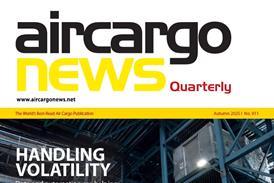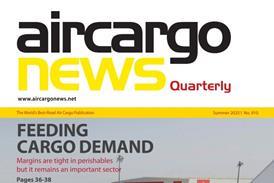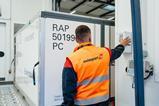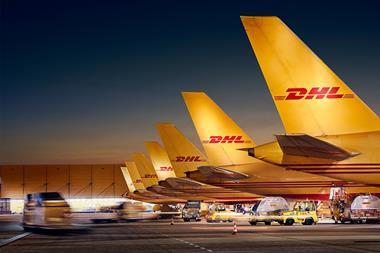
Photo: Travel mania/ Shutterstock
The air cargo industry saw demand levels pick back up in March but the outlook is growing increasingly gloomy after the latest tariff and e-commerce announcements from the White House.
The latest figures from Xeneta show that in March air cargo demand increased by 5% year on year, following a 3% increase in January and a 2% improvement in February.
Meanwhile, capacity increased by 2% year on year and the dynamic load factor remained at the year-ago level of 60%.
Average airfreight rates for the month stood at $2.59 per kg, up 6% compared with last year and up on the $2.53 per kg recorded in February, but growing at their slowest level since June last year.
Northeast Asia-Europe spot rates were unchanged at $4.28 per kg in March, but were up 14% year on year due to "bouyant" e-commerce demand. Northeast Asia to the US spot rates were up 9% month on month to $4.17 per kg on the back of catch-up e-commerce demand after the temporary suspension of the de minimis exemption on China to US parcels in February.
"March saw a third consecutive month of tempered single-digit global air cargo demand growth, although not as subdued as some might have expected,” said Xeneta’s chief airfreight officer Niall van de Wouw.
"The temporary suspension of the de minimis ban by the US government on inbound Chinese shipments produced a recovery in transpacific e-commerce demand.”
Bleak outlook
However, van de Wouw warned that e-commerce volumes will come under pressure from May when the US re-imposes restrictions on China’s ability to benefit from the de minimis exemption.
Air cargo demand is also set to come under pressure due to the US decision to implement a range of tariffs across the globe and the possibility of retaliatory moves from other countries.
"Already reeling from the potential impact of the US’ actions, global air cargo demand is likely to suffer further harm from retaliatory actions by other countries,” said Xeneta in a market wrap up.

Source: Xeneta
Van de Wouw added: “In my 30 years working in the air freight industry, I cannot remember any other unilateral trade policy decision with the potential to have such a profound impact on the market at a global level.
“E-commerce has been the main driver behind air cargo demand. If you suddenly and dramatically remove the oxygen from that demand, it will cause a seismic shock to the market,” he added.
Van de Wouw explained that China-to-US e-commerce shipments account for roughly half of the cargo capacity on the eastbound corridor and around 6% of global airfreight demand.
A disruption to this demand will free up a significant part of this corridor’s cargo capacity and spread its impact to the rest of the market, van de Wouw said.
He added that capacity is also set to rise in the coming months as carriers add flights back into the market to capitalise on the summer tourist season.
There is also the possibility that consumers may reduce their holiday spend as the tariffs put pressure on household income, which has the possibility of freeing up more bellyhold space and airlines adjusting their summer capacity deployment plans to match demand.
To conclude his outlook, van de Wouw said: “No one is benefitting from this situation because it’s impossible to plan effectively against a moving target.
"Clearly, everyone will be waiting to see how the removal of the de minimis threshold and all the global tariffs already announced and those still to come will impact trade, as well as how quickly there will be less demand and, consequently, less airfreight.
"It’s all expectations right now, but we must expect the situation will get worse before it gets better.”


















